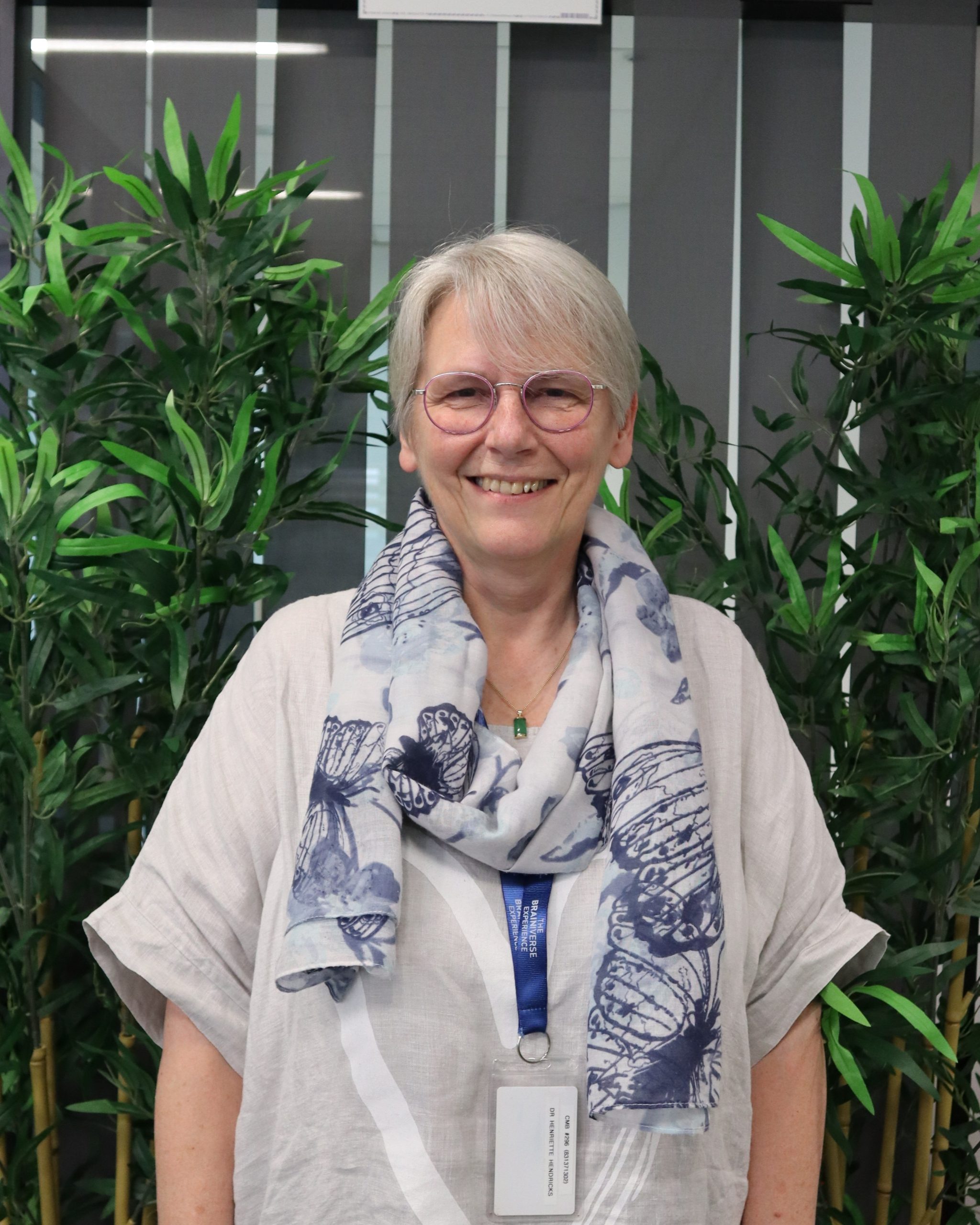Profile

Prof Henriëtte HENDRIKS
Principal Investigator and Deputy Director
Prof Henriëtte Hendriks is Professor of Language Acquisition and Cognition. Her main research area is cognitive linguistics, and she investigates the relationship between language and cognition through work in child first and adult second language acquisition.
Prof Hendriks studied Sinology at Leiden University, and then started her career at the Max-Planck Institute for Psycholinguistics where she worked as a coordinator on three different projects; two DFG projects on child first language acquisition (PI Dr Maya Hickmann), and an ESF funded project on adult second language acquisition (The Structure of Learner Varieties, PI Prof Wolfgang Klein).
In 1998 she moved to the University of Cambridge, where she has been lecturing and researching first and second language acquisition, discourse analysis, and linguistic relativity. During her time in Cambridge, she was PI on the EF-Cambridge Research Unit grant, Co-I on a large number of other grants (European and UK based). Currently she is PI and Deputy Director of the Centre for Lifelong Learning and Individualised Cognition (CLIC).
From 1 Jan 2025, she forms the new CARES management structure as the Director of Education and Skills.
Cambridge
Researchers
CLIC
Research Interest
Major research questions deal with ways in which languages differ in their expression of concepts (person, time, space, causality), and how this impacts on first and second language acquisition. More recently, this has led to research question concerning the relationship between cognitive flexibility and language acquisition and multilingualism.
- First and Second Language Acquisition
- Cognitive Linguistics
- Multilingualism and Cognitive Flexibility
- Reference to Person, Space and Time
Key Publications
ResearchGate profile
Vassiliu, Chrysoula, Victoria Leong, and Henriette Hendriks. ‘The Influence of Multilingual Experience on Executive Function and Structure Learning: Effects in Young Adults in the UK and Singapore’. Languages 9, no. 4 (8 April 2024): 136. https://doi.org/10.3390/languages9040136.
Hendriks, H., Hickmann, M., & Pastorino-Campos, C. (2021) Running or crossing? Children’s expression of voluntary motion in English, German, and French. Journal of Child Language, pp. 1–24. doi:10.1017/S0305000921000271
Soroli, E., Hickmann, M. & Hendriks, H. (2019). Casting an eye on motion events: Eye tracking and its implications for linguistic typology. In: M. Aurnague & D. Stosić (Ed.), The semantics of dynamic space in French: Descriptive, experimental and formal studies on motion expression, pp. 249-288. Amsterdam: John Benjamins.
Tusun, A., & Hendriks, H. (2019). Voluntary motion events in Uyghur: a typological perspective. Lingua, 226, pp. 69-88.
Hickmann M, Hendriks H, Harr A-K, Bonnet P (2018). Caused motion across child languages: a comparison of English, German, and French. Journal of Child Language,45,6, 1247-1274. https://doi.org/10.1017/S0305000918000168.
Hendriks, H., & Hickmann, M. (2015). Finding One’s Path into Another Language: On the Expression of Boundary Crossing by English Learners of French. In: Modern Language Journal, 99, Supplement, pp. 14-31.
Hendriks, H., & Hickmann, M. (2011). Space in second language acquisition. In: Vivian Cook and Benedetta Bassetti (eds.) Language and Bilingual Cognition. Hove, UK: Psychology Press, pp. 315-339. ISBN: 978-1-84872-924-7.
Hendriks, H., Hickmann, M., & Demagny, A.C. (2008). How English native speakers learn to express caused motion in English and French. In: Acquisition et Interaction en Langue Étrangère, 27. Pp.15-41. ISSN: 1234-969X.
